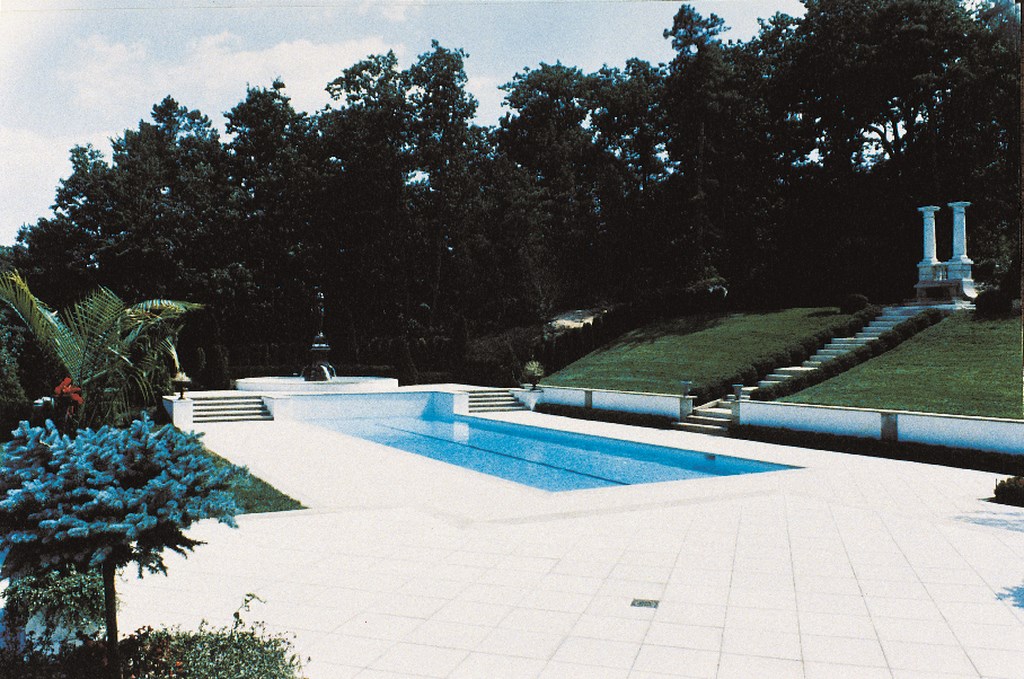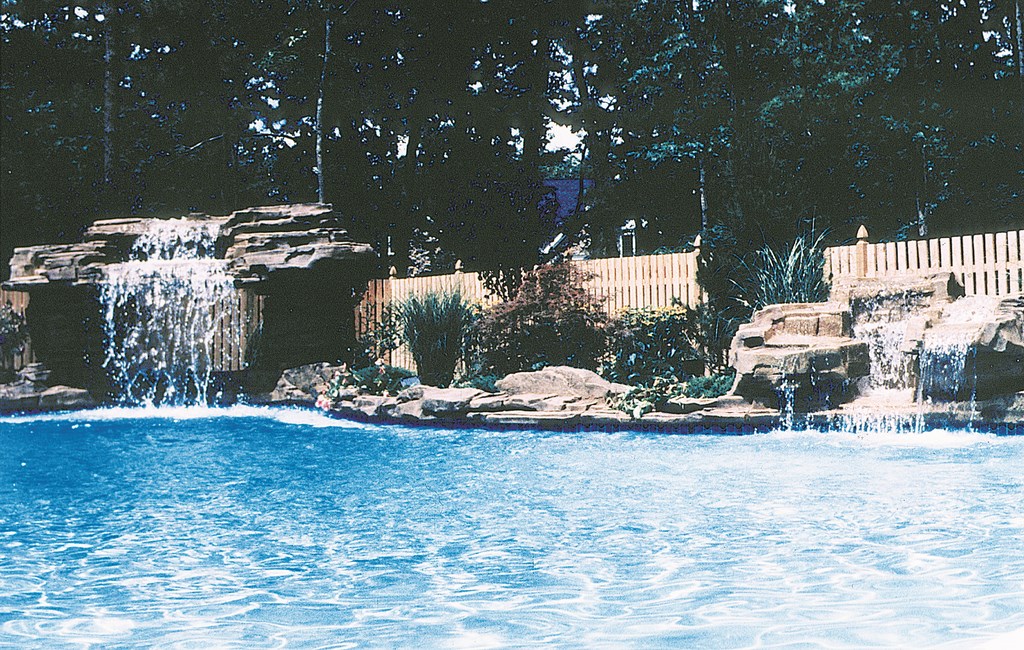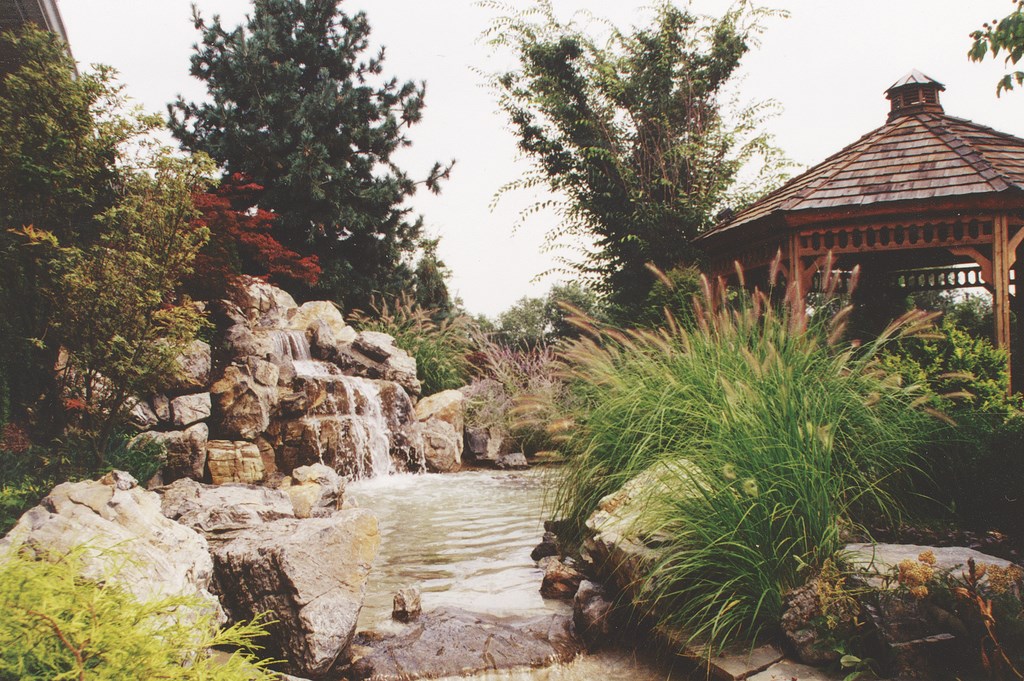Unlocking the Future

No one ever said that change was easy. In our case, in fact, it’s been a struggle every step of the way. But even though we’re still in the middle the process, I can tell already that it’s been worth it – and that the best is yet to come.
Lipinski Pools, an offshoot of Lipinski Landscaping in Mt. Laurel, N.J., has worked with pools as part of the company’s overall landscaping business for several years now. We started by acting as general contractors and farming out a lot of the work.
Using that approach, we designed some nice pools to go with our landscape projects – but we kept running into problems. To say that we grew tired of delays, inconsistent construction and unhappy customers is putting it mildly.
About three years ago, we broke out of the box and started bringing most steps of the pool-construction process in house. We quickly discovered that we had a lot to learn about watershape design and engineering – stuff that didn’t come naturally to a company that had focused on the landscape side for so many years.
A TIME TO GROW
In the early days of the pool division, we were pretty ordinary, building $20,000 to $30,000 pools for a mostly middle-class clientele. We did some nice work, but there was nothing exceptionally creative about what we were doing. Uncomfortable with that reputation, we sought to improve the way we did things.
The pattern started changing in 1999, when a couple of us flew to California to participate in the Genesis 3 Level I Design School – and accelerated when two of us attended the Level II course in Florida early in 2000. It’s safe to say that these schools opened a whole new world of possibilities to us.
In rapid order, we came to view swimming pools as potential works of art; gained the confidence we needed to move forward into (for us) the uncharted territory of high-end custom work; and developed a sense of what it was going to take to reshape the attitude and focus of the pool division.
Among the first lessons we took to heart had to do with understanding the fact that an expensive pool is much more than a big hole that costs a lot because of its sheer size and the fact that it is packed with all sorts of bells and whistles that are put there mostly to drive up the cost. Rather, a worthy custom pool is designed with beautiful materials, fits in with its environment and is built to the highest standards of engineering and construction.
More than anything, we learned that great pools are the products of inspiration, creativity and design expertise rather than a salesperson’s ability to add costly extras to a punch list.
Back in the days when our idea of a high-end pool was one that cost $40,000, I had no idea how much could be accomplished with a swimming pool – but now I do. I give a lot of the credit for this personal growth to the people we met through Genesis 3, particularly David Tisherman. He’s no stranger to people who’ve followed this magazine, and I came to know him quickly – and a bit painfully at first.
When we went to California for the Level I school, we’d heard all the praise for Genesis 3 but really didn’t know what to expect. Just about the first thing that happened was therefore surprising: Tisherman and I quickly engaged in a rather heated “discussion” about what was possible in our New Jersey market.
I gave him the standard line: Customers in our middle-class marketplace would never go for his high-minded approach to design and the high-end pricing that came with it. He wasn’t buying it – and quite pointedly challenged me to think about what we could do in a different way to change things.
After I cooled down, what he was saying began to sink in and make some sense. To get to that point, of course, I had to resist the urge to hop on the next plane and get away from one of the most opinionated, argumentative guys I’d ever met.
REWORKING A GOOD THING
Look at it from our perspective: There we were, with a great landscaping business backing us, being told that we needed to change. There we were, highly successful in our market, being told that we could reach our full potential only by making a commitment to designing projects to their full potential.
As our time in the school passed, we were introduced to materials we’d never considered, to textures and contrasts between textures to which we’d never paid much attention and to an array of technologies we’d never before encountered. Most of all, we were introduced to the concept that you can find inspiration and ideas all over the place – in books and in the works of past masters, great architects and famous designers – when it comes to setting the style and detailing for pools. It was a true epiphany.
| The design freedom that’s come with our decision to go after upscale projects has clearly made a difference in the way we approach our clients’ backyards. This big pool, with its hand-carved and painted rockwork, is one of our mid-range projects – in the $75,000-$100,000 range. |
Eventually, I was beginning to understand what Tisherman and the other instructors at Genesis were talking about. I also thought I was ready for some direct feedback about my own ideas.
I asked Tisherman if he would take a look at two vanishing-edge designs I had developed for upcoming projects. I hesitated, because he’d spent a fair amount of time trashing the work I’d done in class, but this was different: He gave the drawings a serious look – the kind that comes when you know that the drawings are for real customers and that there are real dollars riding on the work.
He looked at the drawings and, in a much more positive way this time, challenged me to think about the process in a whole, new way. To bring his point home, Tisherman agreed to take the process a step further with us and talk to our customers on our behalf. If asked, he said, he’d even offer his design services.
We didn’t take him up on his offer at the time, but after the Level II school about a month later, company owner Bob Lipinski and I made the call: We decided to go back to our vanishing-edge clients and offer them a chance to have their projects redesigned by Tisherman.
To our amazement, both customers were open to the idea, and Tisherman came and met with them. It was during those meetings that we really developed an appreciation for what can happen when a customer sees what can be done at the high end. All Tisherman had to do was walk the clients through his portfolio. Faced with truly beautiful work, their eyes lit up and they immediately said, “That’s what we want.”
They knew working with a Tisherman pool would be significantly more expensive and that the redesign itself would come with a hefty fee attached, but they were so inspired by what they saw that that both pairs of clients went for it. That was when the light bulbs really starting clicking on for me: People who are spending a lot of money on a swimming pool want something beautiful and artistic.
SAVING THE BACON
As if that wasn’t enough, our consciousness was about to be raised another practical notch or two. As a condition of his participation, Tisherman insisted on complete soils reports before he’d start redesigning the pools. As fundamental as that seems, it was something we’d never considered – and a real wake-up call.
The report told us that the top five feet of soil was non-load-bearing, a fact that made us swallow hard given that our first crack at the design had included three-foot concrete footers that would have been worthless. Furthermore, an engineering work-up indicated that a 100-foot-long foundation wall for the house would not be sufficient to support the lateral pressure of the pool and deck we had planned on building.
| For this commercial project, we were asked by a catering company to come up with a setting that could be used for weddings and other festive affairs. We surrounded the pool with picturesque elements, from the gazebo to a cedar bridge, and focused on elegant details, from the moss rock boulders to the pavers used for the decking. Cost: approximately $100,000. |
To get the job done in compliance with this report will entail a doubling of the price of the pool to allow for an extensive substructure. (Had we gone ahead as originally planned, chances are that the pool we would’ve built could have ended up in the clients’ basement at some future date.) The homeowners, who had balked at the expense of the report, were now grateful that a potential disaster had been averted.
We came away from this experience much the wiser for it – and are now committed to sound structural engineering on all of our jobs. In fact, Bob Lipinski and I couldn’t stop discussing the fact that we were looking at an entirely different way of doing business – a much better and ultimately more exciting way.
In fact, this series of revelations has led us to rethink our entire swimming pool operation, top to bottom. It became clear that the lessons we’d learned on these two high-end jobs (both of which will be completed sometime this spring) could and should be applied to all of our swimming pool projects.
Now we’ve organized our projects into three distinct tiers (based roughly on price for want of an easier way). On our low end, we still do several pools ranging in price from $40,000 to $75,000. Then there’s a second tier in the $75,000 to $150,000 range – and above that there’s what we call “Tisherman-style” pools costing $150,000 and up. At each level, we’ve committed ourselves to applying as much of a high-end design sensibility as we can while providing rock-solid engineering and construction practices across the board.
For our least expensive pools, this means doing a quality job of construction, providing customized designs that fit into the environment and offering a range of material upgrades. (That last factor is key: In most cases, I’ve found that our customers will raise the price of their pools to include some form of special tile, decking material or coping.)
INTERNALIZING THE LESSONS
It’s interesting to note that the $40,000 mark really does serve us as a breakpoint in our work: Above that line, we can stick to our principles and do great work on all three levels; when we move below the line, however, we find that compromises must be made – and that’s something we’ve taught ourselves not to accept.
And we think that the $40,000 mark gives us lots of room to maneuver. It includes hydrostatic relief systems, quality forming, detailed drawings, engineering for prevailing soil conditions, close dimensional tolerances and reliable scheduling – not to mention some nice construction details like placing ledges inside shells to support big rocks and other aesthetic features.
Another nice thing the $40,000 buys is close construction supervision in all job phases, from site clearance through to the day we turn the pool over to the owners.
|
Clear Distinctions Among those who are the happiest with the new approach we’re taking at Lipinski Pools are those who’ve been through the pool-construction process before. Over and over, these clients have told us that the process of purchasing and installing the pool was completely different, even enjoyable – praise we have taken to heart, believe me. — K.F. |
Of course, this reshaping of attitudes and work practices has had its organizational effects. For instance, we put a sharp accent on efficiency by bringing in a CAD operator to generate detail drawings for use in the field. We’ve also brought on in-house crews for excavation, guniting, plumbing and steel, and we devote a lot more time (and education) to our design work.
We’ve also evaluated and updated our approaches to plumbing and equipment installation. We’ve learned to upsize plumbing and use smaller pumps to increase hydraulic efficiency. All of our decks now feature steel-reinforced concrete and are overdug by 4 to 6 inches to allow for inclusion of a bed of tamped pea gravel.
In other words, we are now investing the time and resources necessary to do a quality job on every job. Where once we farmed out all phases of the construction process, we now do about four-fifths of the work in-house. We’ve found that taking control in this way is helping us tighten our work procedures on just about every job we do.
Naturally, it’s more expensive to build swimming pools this way, and our prices to consumers have gone up accordingly. At this writing, I’m currently turning away about 75% of the work that comes to us for bid, most of it because the budgets don’t rise to the $40,000 line.
It took some practice, but now I find it is both easier and more satisfying to say “no” to someone who wants a simple pool installed in a hurry for very little money. Now, I couldn’t be happier to let those clients go.
For the remaining 25% who do sign on with our “Quality First” program, we know even at the low end of the spectrum that we’re doing the best work we can. As we set our sights higher, we’re finding that these clients at the lower end of the scale benefit inordinately because the lessons we learn with the high-ticket jobs soon filter down and have made us more creative across all lines and price levels.
UPGRADING THE TEAM
We also know our design limits and have called on top-notch designers to assist us in our work. Tisherman helps us at the very high end, while Kirk Bianchi of Arizona Pool Builders in Scottsdale helps us with designs in our middle range. (He’s another talented person we met through the Genesis schools.)
As I have stressed repeatedly, change is never easy. Finding the right crews and workers to execute this elevated approach has been difficult and almost impossible at times. We’ve even run into snags because some of the inspectors in our local markets have never seen things like vanishing-edge details, all-stone decks or poured-in-place coping.
| Our new approach has led us to incorporate design elements we wouldn’t have considered or offered to our clients when we first started building pools, but now details like special spillways, raised planters and spas, fire pits, shade structures and much more have become part of our growing design vocabulary. Yes, our pools now cost more than most – but they have what it takes to meet the demands of upscale clients. This particular project, created by our design partner Kirk Bianchi and built by Roger Soares of Hydroscapes (Fountain Hills, Ariz.), is an example of the kinds of features and design concepts we want to bring to and apply in our own marketplace. |
We’ve also had problems obtaining some of the materials we’d like to offer, such as pebble surfaces: We simply don’t have subcontractors in our area who do this kind of work. But we keep plugging away, working hard to find people who can help us expand our design palette with respect to both materials and techniques.
Is this still a work in progress? For all the reasons charted above and more, the answer is absolutely “yes.” Exactly what the outcome of all of this will be is difficult to tell, but I can say with some certainty that the result will be based on work at a higher standard with a far more open mind about possibilities.
The two vanishing-edge pools David Tisherman has helped us with are still in the works and will represent a real test for us, but so far we’ve already completed several less-expensive pools under this new regime, and the results have been both striking and encouraging: Not only are these pools beautiful, but our clients have been thrilled with the process, start to finish.
Yes, our pools do cost more now (in some cases a lot more), but the result is a client base that is interested in quality and that is pushing us to levels we’d never thought of before. Now we’re becoming a firm that can give them what they want – and that, we know, is a transformation worth pursuing.
Kevin Fleming was, at the time this article was written, swimming pool manager for Lipinski Pools, an offshoot of Lipinski Landscaping of Mt. Laurel, N.J. He is now a partner with David Tisherman in Liquid Design of Cherry Hill, N.J. A 1991 graduate in landscape architecture from West Virginia University, he worked in residential landscape design, sales and project management for a New Jersey landscaping firm from 1991 until 1998, when he started the company’s swimming pool division and, in 2001, a new division aimed at providing design/build services for custom, high-end residential watershapes.














